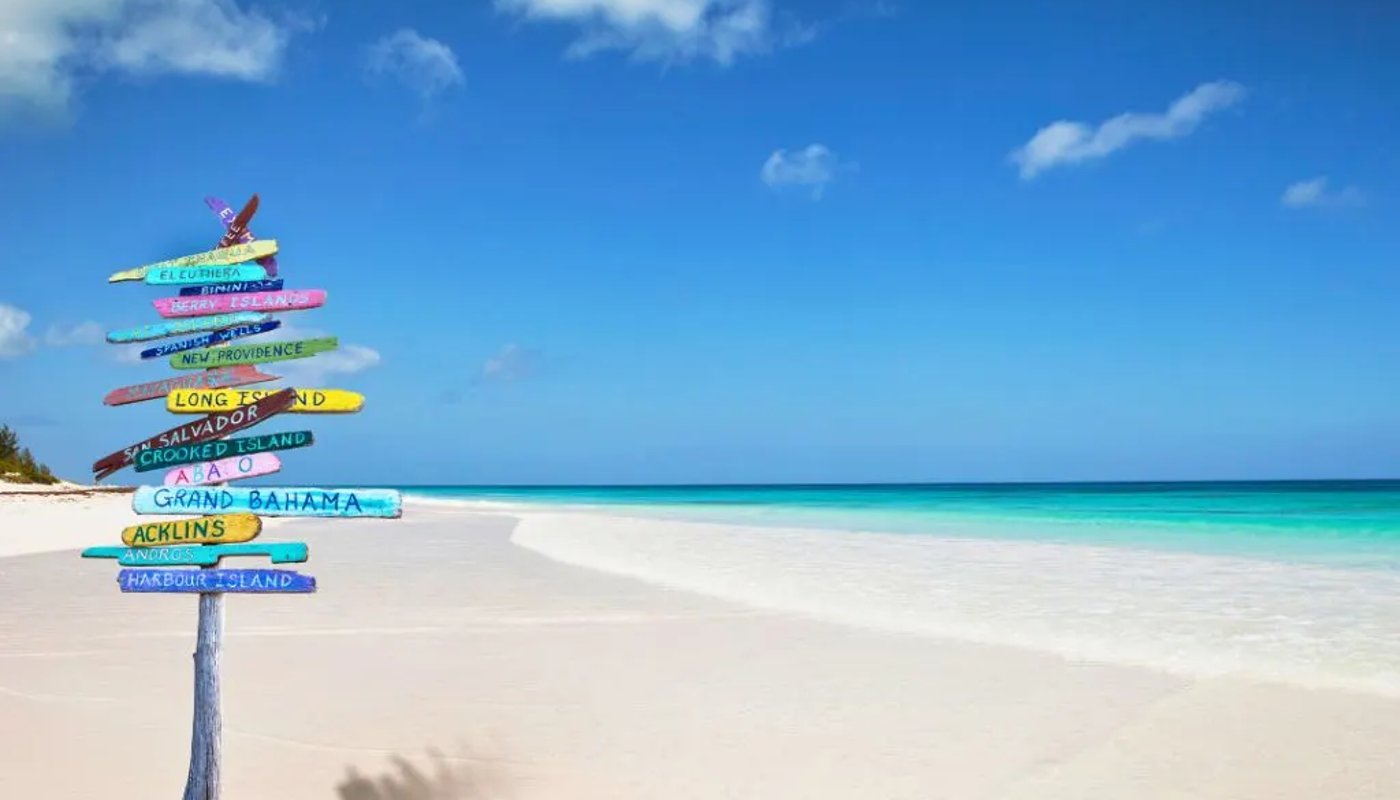Tips for first-time visitors to the Bahamas — What to know before you go
Thinking about that first trip to the Bahamas? You're not alone—and you're definitely not the first to underestimate how much there is to know before stepping off the plane. This Bahamas travel guide is packed with practical, no-nonsense tips for first-time visitors to help you avoid rookie mistakes, embrace the local culture, and get the most out of every sun-drenched moment.
Whether you're planning to relax on the best beaches in the Bahamas, snorkel through crystal-clear reefs, or dive into unique things to do in Nassau, this is the guide you’ll wish you had read before you left.
Let’s start with timing, because in the Bahamas, when you go is just as important as where.
Best time to visit the Bahamas
The Bahamas might look like paradise all year long, but don’t let the palm trees fool you. The weather—and even the crowd levels—can shift drastically depending on the season.
Here's how to choose the perfect time for your trip, based on Bahamas weather trends and your travel priorities.
Dry season: December to April — peak perfection
This is the postcard season. Warm days, cool breezes, and barely a cloud in sight. Expect daytime temps between 70°F and 80°F (21°C to 27°C), and nearly every outdoor activity—from snorkeling to island hopping in the Bahamas—is fair game.
But it’s also high season for a reason:
Prices rise across the board (especially in Nassau and popular resort areas).
Hotels and tours sell out fast—sometimes months in advance.
Expect crowds at major Nassau attractions and popular beaches.
If you're traveling during these months, book early, budget for higher costs, and consider staying on a smaller island for a quieter experience.
Shoulder season: May and November — sweet spot for savings
If you're looking to save money without sacrificing sunshine, the shoulder seasons offer a solid middle ground.
The weather is still warm and mostly dry, but fewer tourists mean:
Better deals on flights and private accommodations.
Easier reservations for tours and experiences.
Less crowded beaches, bars, and historical sites.
You might catch a passing rain shower, but it’s usually short-lived—and sometimes even refreshing after a long beach day. Check out our insider tips on how to experience the Bahamas on a budget to make sure you get the most out of your trip without breaking the bank.
Hurricane season: June to November — know before you go
This stretch often scares people off, but here’s the truth: it doesn’t storm every day, and plenty of travelers visit the Bahamas during this time with no issues.
That said, August to October is peak hurricane risk. If you're traveling then:
Book flexible or refundable stays.
Get travel insurance that covers weather-related changes.
Keep an eye on the forecast starting a week out.
Early June and late November are safer bets if you want low-season prices with lower risk.
A few extra tips on timing your trip
Holiday surges: Christmas, Easter, and Spring Break bring major crowds, especially to Nassau and Paradise Island. Plan ahead if you're going during these.
Event weeks: Junkanoo (late December) and other festivals are a great cultural experience, but they can affect availability and pricing.
Sunrise/sunset: Days are longer in summer, shorter in winter. Keep that in mind for outdoor activities. You can also read more about the top reasons to go to the Bahamas this summer.
Understanding the best time to visit the Bahamas can help you avoid surprises and make the most of your adventure, whether you’re headed for island hopping, exploring historical sites in the Bahamas, or just chasing the next perfect beach day.
Getting to the Bahamas — transportation tips
Before you’re lounging on a white-sand beach or swimming with pigs in Exuma, you need to actually get to the Bahamas. The good news? It’s easier than ever.
Whether you're flying in from the U.S., cruising through the Caribbean, or hopping over from a nearby island, this guide breaks down everything you need to know about transport in the Bahamas—from touchdown to toes in the sand.
This section is especially helpful for first-time visitors to the Bahamas, who want a stress-free arrival and a smooth start to their trip.
Flying into the Bahamas
Most travelers arrive by air, especially from the U.S., Canada, and the UK. While the Bahamas is made up of over 700 islands and cays, only a few have major airports.
Here are the key ones to know:
Lynden Pindling International Airport (NAS) in Nassau is the main international gateway. It offers direct flights from major hubs like New York, Miami, Atlanta, Toronto, and London (seasonally). It’s also the most connected airport for domestic transfers to the Out Islands.
Grand Bahama International Airport (FPO) in Freeport serves fewer international routes but is convenient for direct access to Grand Bahama Island. Service is rebuilding post-hurricane, and charter flights are common.
Smaller airports on islands like Exuma (GGT), Eleuthera (ELH), Abaco (MHH), and Bimini (BIM) receive regular regional flights, mainly from Florida. These are typically operated by carriers like Bahamasair, Western Air, and Silver Airways.
Pro tip: If you're flying back to the U.S., you'll clear U.S. Customs before departure in Nassau or Freeport—a huge time-saver once you land stateside.
Arriving by cruise
The Bahamas is one of the world’s most popular cruise destinations—and for good reason.
Cruise lines like Royal Caribbean, Carnival, and Disney run frequent routes to Nassau, Freeport, and private islands like CocoCay and Castaway Cay. These stops often offer a taste of Nassau attractions like the Queen’s Staircase, Atlantis, or the Straw Market.
But here’s the deal: Cruise visits are short and limited to the port area unless you book excursions. Make sure to book tours that work with your cruise schedule, not against it. Read more about the top cruise-friendly Bahamas tours you can’t miss.
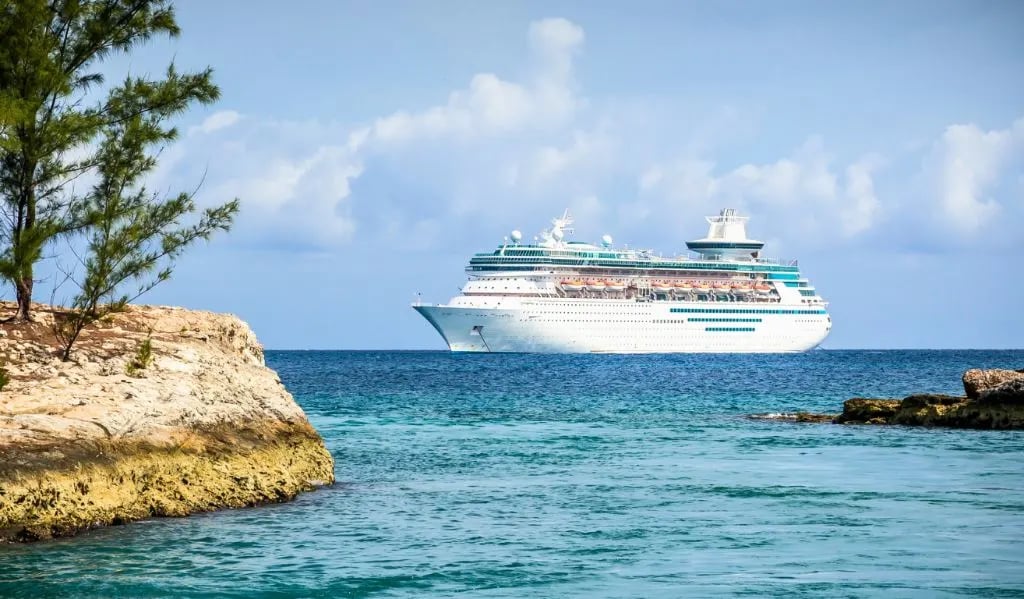
Island hopping from nearby destinations
Already vacationing in Florida or the Caribbean? There are quick options for reaching the Bahamas from nearby hotspots:
Ferries from Fort Lauderdale to Bimini and Grand Bahama (via Balearia Caribbean) run regularly and take around 2–3 hours.
Charter flights and water taxis connect the Bahamas to places like the Turks and Caicos, Cuba, and the Dominican Republic.
If you're planning a multi-country Caribbean adventure, this can be a fun way to add the Bahamas to your itinerary without the full airfare expense.
Entry requirements for first-time visitors
If you're a U.S. or Canadian citizen, you don’t need a visa for visits under 90 days. Just bring a valid passport.
Traveling with kids? Each child will need their own passport. And if one parent is traveling solo, bring a notarized permission letter from the other parent—it’s often requested at immigration.
This is a crucial tip for first-time visitors to the Bahamas, especially families or groups traveling with minors.
Getting around the Bahamas — more transportation tips
Once you've landed, cruised, or ferried your way into the Bahamas, it’s time to figure out how to get around. With over 700 islands and cays, transport in the Bahamas is a key part of trip planning—and one that often catches new travelers off guard.
Inter-island travel options
You’ll likely want to explore beyond just one island, and that’s where island hopping in the Bahamas comes in.
Here’s how to move between islands like a pro:
Domestic flights are the fastest option. Airlines like Bahamasair and Western Air offer multiple daily routes between major islands such as Nassau, Eleuthera, Exuma, and Abaco.
Ferries (run by companies like Bahamas Ferries) connect Nassau to many of the Out Islands. They’re cheaper than flights and offer scenic views, but take longer.
Private boat charters are ideal if you’re after flexibility or planning a romantic or group trip. Many charter companies offer customizable island-hopping routes.
Tip: Always book in advance—especially during weekends, holidays, or high season (December to April).
On-island transportation
Transportation varies a lot depending on which island you're on, so here’s what to expect once you’re there:
Taxis are widely available in Nassau and Freeport. They’re unmetered, so always agree on the fare before your ride.
Rental cars are great for larger islands. Just remember: in the Bahamas, people drive on the left side of the road.
Jitneys (local minibuses) run scheduled routes in Nassau and are the most budget-friendly way to get around. However, they don’t operate at night, so plan ahead if you’re out late.
Smaller Out Islands may not have taxis or public transport. Always check your island’s transport options ahead of time.
Getting around the smaller islands
Some of the best beaches in the Bahamas and hidden gems are on smaller, car-free islands—and that's part of what makes them so magical.
Here’s how people get around:
Golf carts and bicycles are king on islands like Harbour Island, Staniel Cay, and parts of the Exumas. They’re easy to rent and great for short distances.
Walking is often your best bet. On super laid-back islands, you’ll find yourself walking everywhere—and loving it.
For smooth arrivals, arrange your airport or ferry transfers in advance. Drivers are usually locals who double as tour guides and can share insider tips you won’t find in a brochure.
What to pack for your Bahamas trip
Packing for the Bahamas isn’t just about swimsuits and sunscreen. If it’s your first time visiting, there are a few things you’ll want to bring that go beyond beachwear, especially if you're planning on island hopping, exploring Nassau attractions, or heading out on a boat tour.
Here’s how to pack smart so you’re covered for the heat, the sun, and those surprise moments you didn’t think to plan for.
Clothing essentials
The Bahamas' weather is warm year-round, but it can swing between hot, breezy, and occasionally wet, sometimes all in the same day.
A few must-haves:
Lightweight, breathable clothing like cotton or linen. You’ll want to stay cool whether you’re walking through town or chilling by the beach.
Multiple swimsuits so you’re not stuck putting on a damp one before your next boat ride.
A light sweater or jacket for air-conditioned restaurants or cooler nights, especially if you're traveling outside the summer peak.
Casual clothes—think sundresses, shorts, and comfy tops. Unless you’ve got something formal on the itinerary, you can skip packing fancy outfits.
Sun protection
No matter when you go, the sun here is strong, even on overcast days. And if you’re planning to spend hours on the beach or snorkeling, you’ll need more than just one coat of sunscreen.
Make sure you pack:
High-SPF sunscreen (reef-safe, always—it helps protect the marine life).
UV-blocking sunglasses and a wide-brim hat to shield your face and neck.
A rash guard or swim shirt if you’re snorkeling or boating. It gives you extra sun protection, especially on your back and shoulders.
Remember: the closer you are to the water, the faster you’ll burn.
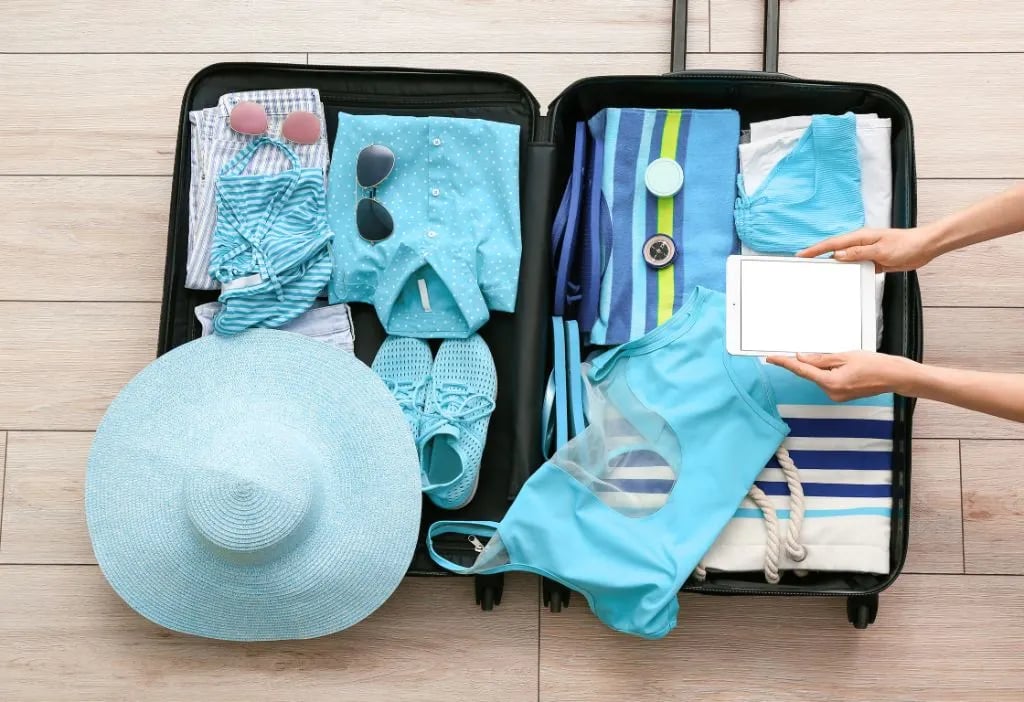
Small essentials you’ll be glad you brought
These are the things people often forget—until they need them.
Bug spray, especially if you’re traveling during or after rainy weather.
A reusable water bottle to stay hydrated in the heat (a must if you're out all day).
A dry bag or waterproof pouch for boat trips or beach days—great for keeping your phone, wallet, and snacks dry.
Travel adapter if you're coming from outside North America (the Bahamas uses the same outlets as the US).
These little extras can go a long way in keeping your trip easy, comfortable, and stress-free—especially if it’s your first time visiting the Bahamas. For convenience, you can visit trusted retailers like Amazon, Target, and Backcountry.
Top islands to visit for first-time travelers
With over 700 islands and cays, it’s easy to feel spoiled for choice in the Bahamas. But if it’s your first trip, you’ll want to stick to the islands that offer the best mix of beauty, accessibility, and iconic experiences.
Whether you’re after historical sites in the Bahamas, luxury resorts, or postcard-perfect beaches, these destinations check every box.
New Providence Island (Nassau)
This is where most first-time travelers land—and for good reason. New Providence is home to Nassau, the capital city, and it's packed with Nassau attractions that blend local history with modern flair.
You can wander through Fort Charlotte, snap photos at the Queen’s Staircase, and stroll Bay Street for food, shopping, and culture.
Oh, and the beach? Cable Beach is just a quick drive from downtown. Add some nightlife, casinos, and easy access to other excursions, and you've got the full Bahamas travel guide starter pack.
Paradise Island
Connected to Nassau by a short bridge, Paradise Island is exactly what it sounds like: a palm-lined playground for travelers who want luxury with a side of fun. It’s best known for the Atlantis Resort, but the island has more to offer than just water slides and aquariums.
With beachfront resorts, upscale dining, and curated experiences for couples and families, this is where you go when you want to mix comfort with classic island indulgence.
Exuma Cays
If you’ve ever seen a photo of someone swimming with pigs in crystal-clear water—this is where it was taken. The Exumas are famous for their bone-white sandbars, gin-clear water, and of course, the swimming pigs at Big Major Cay.
But there’s more. These cays are a dream for snorkeling, kayaking, and island hopping in the Bahamas, especially if you’re trying to get away from the crowds and find your own slice of paradise.
Grand Bahama Island (Freeport)
Freeport, the largest city on Grand Bahama, offers a little bit of everything: nature, shopping, and history. It’s home to Lucayan National Park, where you’ll find one of the world’s longest underwater cave systems, plus secluded beaches and winding mangrove trails.
The Port Lucaya Marketplace is great for a laid-back afternoon of Bahamian food, souvenirs, and local music. If you’re looking for a well-rounded mix of adventure and culture, this island delivers.
Harbour Island
Harbour Island is best known for one thing: its dreamy pink sand beaches. It’s smaller and quieter than other islands, but that’s exactly what makes it special.
You’ll find pastel-colored cottages, boutique hotels, and a warm, relaxed atmosphere that’s perfect for couples or solo travelers looking for a slower pace. It’s one of the best spots for unplugging and soaking up that peaceful side of Bahamian culture and customs.
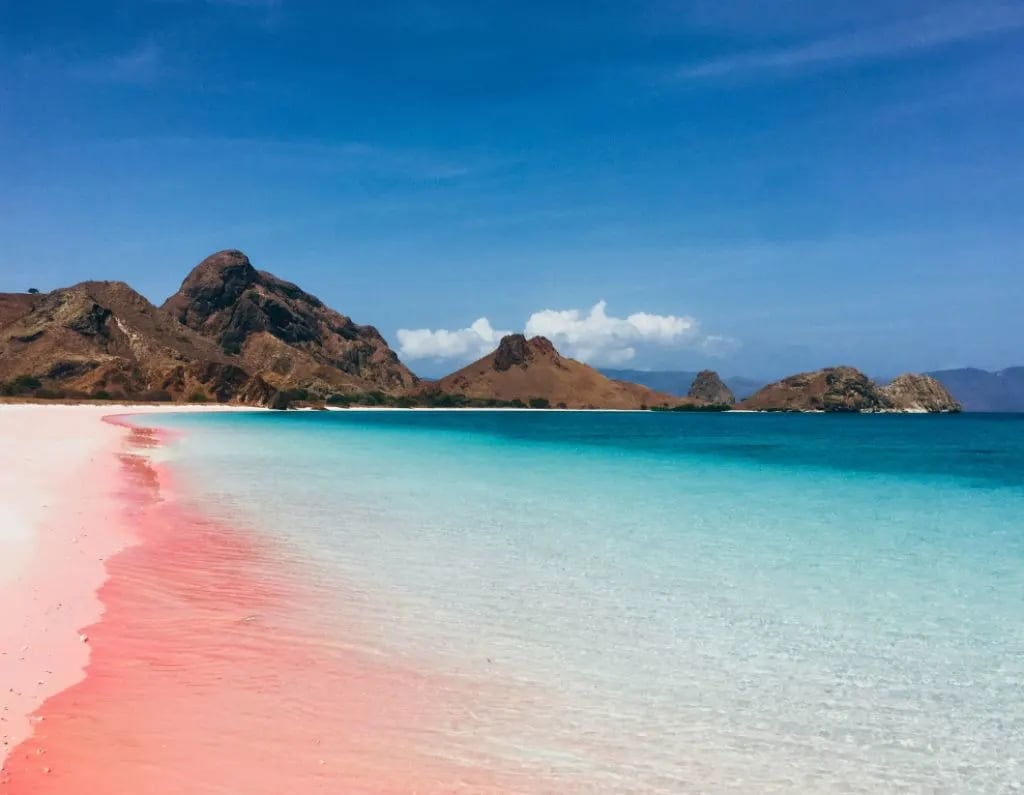
Must-do tours and experiences for first-time visitors
No Bahamas travel guide would be complete without highlighting the tours that help you truly experience the islands. These aren’t tourist traps—they’re iconic for a reason.
Swimming with pigs
This one’s a rite of passage for first-time visitors. The swimming pigs of Exuma are as curious and friendly as they are photogenic. Most tours also include stops for snorkeling, lunch on a sandbar, and even stingray encounters.
If you're looking for tips for first time visitors in the Bahamas, here's one: book this early—it fills up fast.
Snorkeling adventures
The Bahamas is a snorkeler’s dream. With coral reefs just offshore and fish in every color imaginable, you don’t need to be a pro to enjoy it. Great beginner-friendly spots include Rainbow Reef and the waters around Rose Island.
Many tours offer guided snorkeling trips that include gear, so you can just show up and dive in. Find your ideal snorkeling tour right here.
Pirate museum in Nassau
For a deep dive into the island’s pirate past, stop by the Pirates of Nassau Museum. It’s part educational, part theatrical, and totally worth it. There are replica ships, interactive displays, and stories about the real-life pirates who once ruled these waters.
This sightseeing pirate jeep tour is also a fun way to connect with the historical sites in the Bahamas without doing a full walking tour.
Rum distillery tours
You can’t leave the Bahamas without trying local rum—and the best way to do that is straight from the source. Head to John Watling’s Distillery in Nassau, set on a historic estate, and learn how small-batch rum is made.
Tours like Nassau Historic ATV & Buggy Tour include tastings and history. Bonus: the gift shop is stocked with rare blends you won’t find at the airport.
Cultural and historical tours
Want to understand the Bahamian culture and customs beyond the beach? Take a guided tour through some of Nassau’s most significant landmarks, like Fort Fincastle, the Queen’s Staircase, and the National Art Gallery of the Bahamas.
These tours offer stories, context, and a closer look at how the islands evolved—from their Indigenous roots to British colonial influence to modern independence.
Understanding Bahamian Culture and Customs
One of the best parts of visiting the Bahamas? It’s not just the beaches—it’s the people. Warm, welcoming, and full of island pride, Bahamians love sharing their culture. But as a visitor, it helps to know a few things about local customs so you can blend in respectfully and confidently.
Say hello—it matters
Bahamians are famously friendly, and greetings are a big deal here.
A “good morning,” “good afternoon,” or “good night” isn’t just polite—it’s expected, especially in shops, restaurants, and small towns.
Don’t be shy—make eye contact, smile, and say hello when you walk into a room or pass someone on the street.
Skipping a greeting can come off as rude, even if you didn’t mean it that way.
Respect the laid-back pace
Island time is real—and it’s a way of life.
Things may move a little slower here: whether it’s a restaurant meal, a ferry, or even a conversation, expect a relaxed pace.
Don’t rush people or act impatiently. Instead, lean into it. You’re on vacation, after all.
This slower rhythm is part of what makes the Bahamas feel like a true escape.
Tipping is appreciated—and expected
Just like in the U.S., tipping is customary in the Bahamas.
Most restaurants automatically add a 15% gratuity to your bill, but you can leave more if the service is exceptional.
For taxi drivers, porters, tour guides, and spa staff, a tip of 10–20% is standard.
Hotel housekeeping staff typically receive $2–$5 per day.
Check your bills—if a service charge isn’t included, plan to tip accordingly.
Embrace the celebrations
Bahamian culture is joyful, colorful, and rooted in centuries of tradition.
If your trip lines up with Junkanoo, don’t miss it. Think Caribbean Carnival meets Mardi Gras, complete with parades, costumes, and live music.
Local festivals happen throughout the year in various islands and often celebrate food, history, or sailing. They’re open to everyone and are a great way to connect with locals.
Joining in (respectfully) is welcomed and encouraged.
Respect the land and sea
Bahamians have deep respect for their natural surroundings, and visitors are expected to do the same.
Don’t touch or step on coral reefs when snorkeling.
Avoid taking shells or marine life from the beach.
Say no to plastic whenever possible—bring your own reusable bag and water bottle.
Participate in sustainable tours with tour providers that value sustainability.
The Bahamas is more than a pretty backdrop—it’s a fragile ecosystem locals are passionate about protecting.
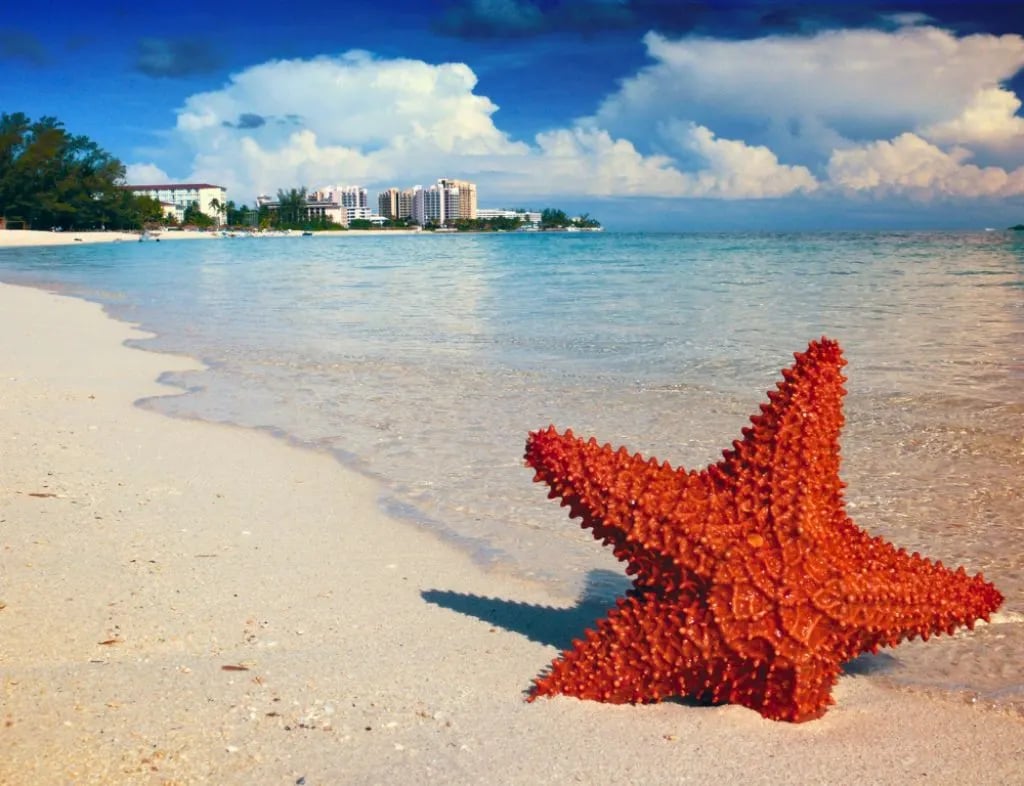
Plan your unforgettable Bahamian adventure
Whether you're snorkeling coral reefs, exploring historic forts, or soaking in the view from a pink-sand beach, the Bahamas gives you every reason to come back.
For first-time visitors, planning ahead makes all the difference. Booking your activities through Tour Daddy means you’re skipping the guesswork and jumping straight into the best experiences, especially if you’re tight on time or traveling with kids.
So pack smart, book early, and get ready to confidently explore one of the most beautiful and welcoming places in the world.

